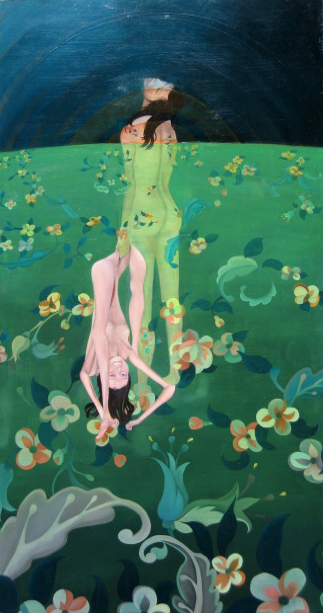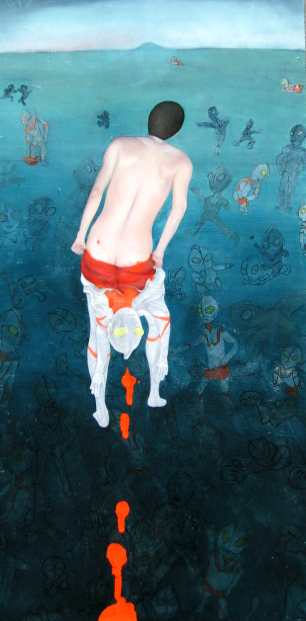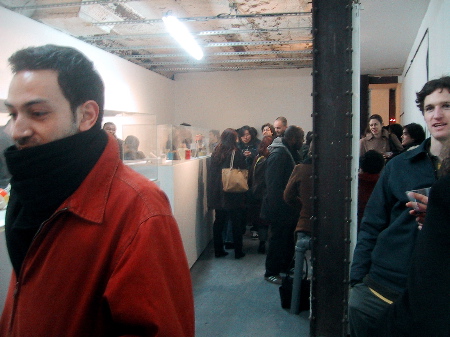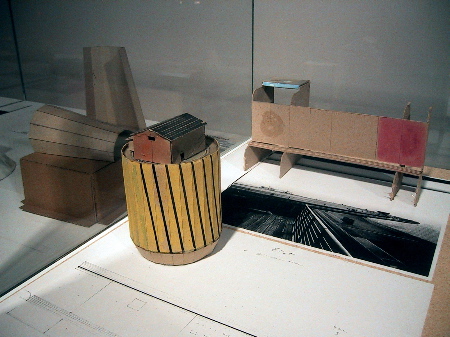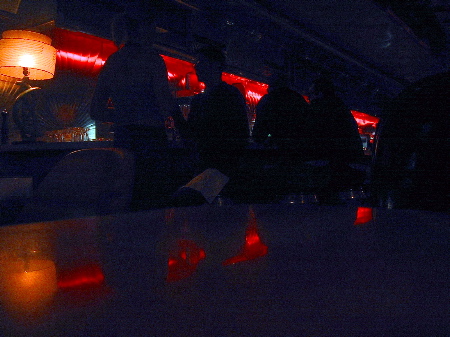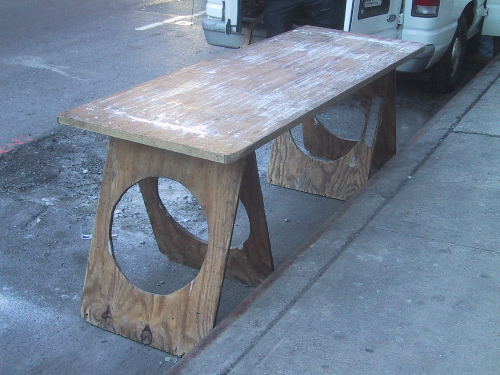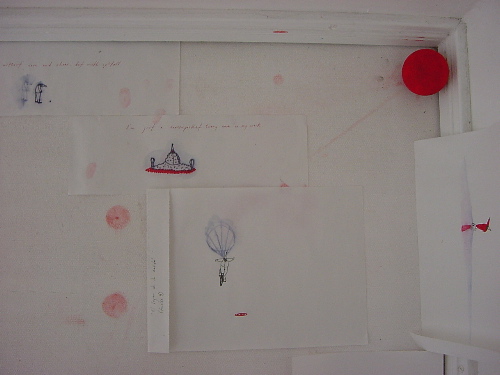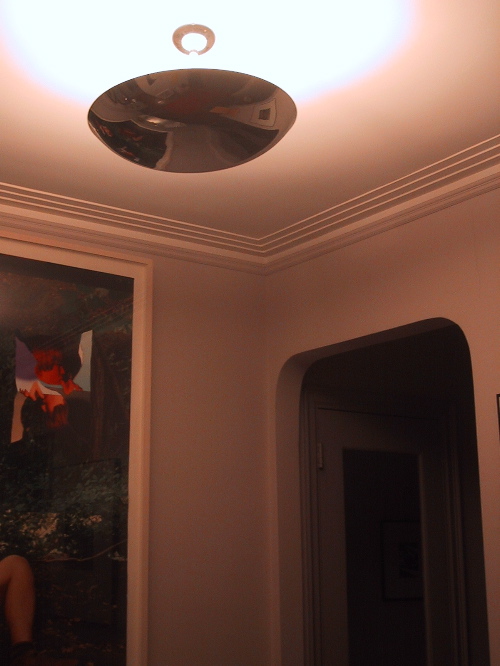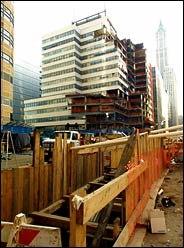Now I remember why I go to live performances of symphonic music! Transcendence.
Also remembered only when we got there was why we had purchased tickets weeks ago for tonight's Orchestra of St. Luke's concert. Once we saw the programs at Carnegie Hall the poetry readings listed as intervals on a schedule of very serious musical stuff quickly reminded us why we decided to sign up.
Oooh, but good, political activism in a good classical music program, is it even possible? Yes, and in great performances as well!
We have to credit the New York players and the excellent conductor, Donald Runnicles, for the performances, but I'm not sure who was/were the heroes responsible for putting the provocative program together in the midst of our own wars and political terrors. This is only my footnote, and perhaps it was only a coincidence, but the day happened to mark the anniversary of the first bombing of the World Trade Center in 1993.
See the Carnegie Hall site for complete program notes [absent the poetry texts] and an audio link with comments from Runnicles.
Excerpts from leftist and antiwar poetry by Wislama Szymborska, Virgil, Bertolt Brecht, W. H. Auden, Siegfried Sassoon and Seamus Heaney, all read sympathetically by our favorite Abe Lincoln stand-in, Sam Waterston [who has also appeared as himself in ads for The Nation], were placed as lyric hinges separating major pieces, equally political, by Aaron Jay Kernis, Richard Strauss, Karl Amadeus Hartmann and Dmitri Shostakovich.
The orchestra was assembled, but both it and the darkened hall remained silent for the uncompromising reminder delivered in the first of the six readings. Syzmborska's "Children of the Epoch".[here in excerpt]:
We are children of the epoch.
The epoch is political.
All my daily and nightly affairs,
all your daily and nightly affairs,
are political affairs.
Whether you want it or not,
your genes have a political past,
your skin a political tone,
your eyes a political color,
What you say resounds,
what you don't say is also
politically significant.
The Kernis, "Sarabanda in Memorium", was very New Romanticism pretty, but less than halfway through the sixteen-minute piece described as somehow related to September 11, my attention began to flag. Kernis is a very good composer. I'm just never sure he really has anything new to say.
The performance of "Metamorphosen", which the aged Strauss composed in the midst of the physical and cultural ruin of his beloved Germany in 1945, seemed too slow, and it never really took off, the way it always seems to in my memory, or at least in the von Karajan recording we have at home. But I have to admit that any enjoyment of the piece was compromised by the constant chatter of a couple nearby for whom the evening's august program represented more an occasion for serious foreplay than art. So maybe it was just me - or them.
Ah, but after the intermission the orchestra finally showed what it was able to do as a large ensemble.
A reading of Auden's mournful "September 1, 1939" set the tone for the second half of the evening.
Perhaps it was only coincidence, but now with the last two pieces as the number of players on the stage increased, first with Hartmann's melancholy 1939 [violin] "Concerto Funebre", and then to 60-strong, with Shostakovich's happy, end-of-the-war Ninth Symphony, the quality of music was phenomenal.
Vladimir Spivakov was the wonderful soloist in the Hartmann piece.
Waterston's last readings were Sassoon's "Everyone Sang", describing the end of the first Great War, followed by Heaney's "The Cure at Troy". These poems preceded the Shostakovich, and matched his music in its spirit of hope.
The Hartmann never sounded better, although I've only had the opportunity to hear it in recordings up until now, and the reading of the 1945 symphony in E-flat Major, with its toy soldier/circus music elements, was magnificent. Odd, that one, and especially odd to find, as Barry said, that any Shostakovich piece could be the lightest work on a program of symphonic music shared by three other composers.
My own thought as the piece made its way to its delightful conclusion? What a wonderful way to end a horrible war!
And a wonderful evening.
And for the record, and for our present times as well, this is the complete Brecht poem:
FROM A GERMAN WAR PRIMER
AMONGST THE HIGHLY PLACED
It is considered low to talk about food.
The fact is: they have
Already eaten.
The lowly must leave this earth
Without having tasted
Any good meat.
For wondering where they come from and
Where they are going
The fine evenings find them
Too exhausted.
They have not yet seen
The mountains and the great sea
When their time is already up.
If the lowly do not
Think about what's low
They will never rise.
THE BREAD OF THE HUNGRY HAS
ALL BEEN EATEN
Meat has become unknown. Useless
The pouring out of the people's sweat.
The laurel groves have been
Lopped down.
From the chimneys of the arms factories
Rises smoke.
THE HOUSE-PAINTER SPEAKS OF
GREAT TIMES TO COME
The forests still grow.
The fields still bear
The cities still stand.
The people still breathe.
ON THE CALENDAR THE DAY IS NOT
YET SHOWN
Every month, every day
Lies open still. One of those days
Is going to be marked with a cross.
THE WORKERS CRY OUT FOR BREAD
The merchants cry out for markets.
The unemployed were hungry. The employed
Are hungry now.
The hands that lay folded are busy again.
They are making shells.
THOSE WHO TAKE THE MEAT FROM THE TABLE
Teach contentment.
Those for whom the contribution is destined
Demand sacrifice.
Those who eat their fill speak to the hungry
Of wonderful times to come.
Those who lead the country into the abyss
Call ruling too difficult
For ordinary men.
WHEN THE LEADERS SPEAK OF PEACE
The common folk know
That war is coming.
When the leaders curse war
The mobilization order is already written out.
THOSE AT THE TOP SAY: PEACE
AND WAR
Are of different substance.
But their peace and their war
Are like wind and storm.
War grows from their peace
Like son from his mother
He bears
Her frightful features.
Their war kills
Whatever their peace
Has left over.
ON THE WALL WAS CHALKED:
They want war.
The man who wrote it
Has already fallen.
THOSE AT THE TOP SAY:
This way to glory.
Those down below say:
This way to the grave.
THE WAR WHICH IS COMING
Is not the first one. There were
Other wars before it.
When the last one came to an end
There were conquerors and conquered.
Among the conquered the common people
Starved. Among the conquerors
The common people starved too.
THOSE AT THE TOP SAY COMRADESHIP
Reigns in the army.
The truth of this is seen
In the cookhouse.
In their hearts should be
The selfsame courage. But
On their plates
Are two kinds of rations.
WHEN IT COMES TO MARCHING MANY DO NOT
KNOW
That their enemy is marching at their head.
The voice which gives them their orders
Is their enemy's voice and
The man who speaks of the enemy
Is the enemy himself.
IT IS NIGHT
The married couples
Lie in their beds. The young women
Will bear orphans.
GENERAL, YOUR TANK IS A POWERFUL VEHICLE
It smashes down forests and crushes a hundred men.
But it has one defect:
It needs a driver.
General, your bomber is powerful.
It flies faster than a storm and carries more than an elephant.
But it has one defect:
It needs a mechanic.
General, man is very useful.
He can fly and he can kill.
But he has one defect:
He can think.
[Brecht text from the Amherst Peace Vigil]
